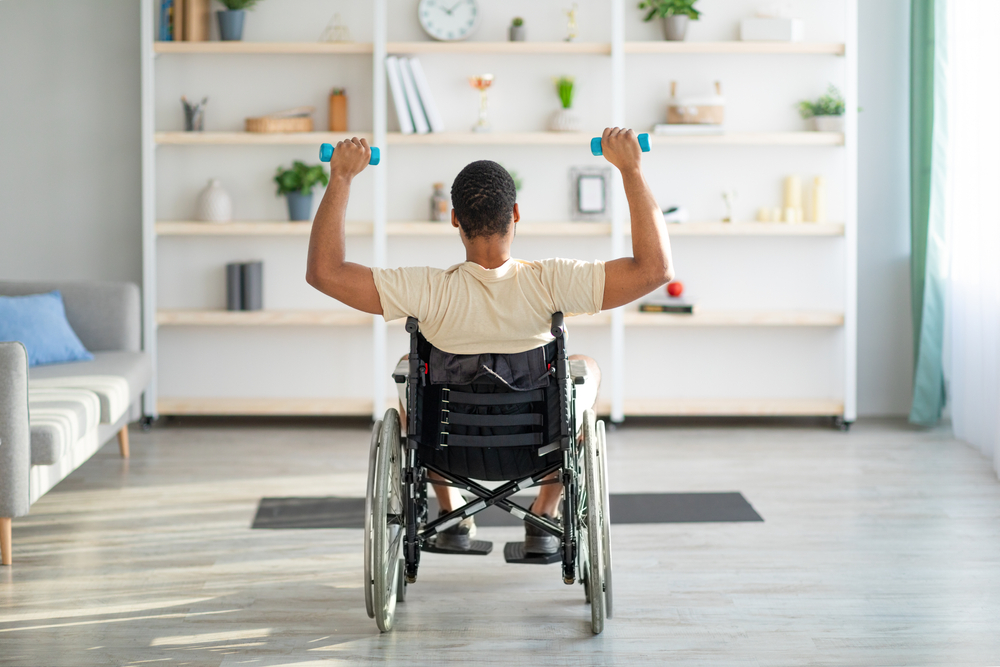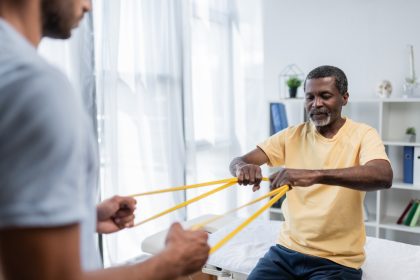Recovering from back surgery can be a challenging and emotional journey. It often comes with physical and mental hurdles that require patience, perseverance and a well-structured rehabilitation plan. Effective rehabilitation after back surgery is crucial to regaining mobility, reducing pain and ensuring long-term success. Here are five ways to effectively rehabilitate and get back on your feet with confidence.
Back surgery can be a life-changing procedure, offering hope and relief to those suffering from chronic pain or severe spinal conditions. However, the journey doesn’t end once the surgery is over. The real work begins during the recovery phase, where effective rehabilitation plays a pivotal role in restoring function and quality of life. This phase can be daunting, filled with uncertainties about mobility, pain management and the fear of reinjury. To help navigate this critical period, it is essential to focus on a comprehensive rehabilitation plan that addresses physical healing and emotional well-being.
Rehabilitation after back surgery is not just about exercises and physical therapy; it’s a holistic approach that encompasses various aspects of health, including nutrition, mental health and lifestyle modifications. A successful recovery plan empowers patients to take an active role in their healing process — fostering a sense of control and optimism. The following five methods offer a roadmap to effective rehabilitation, aiming to ease the journey back to normalcy and beyond.
1. Start with guided physical therapy
One of the most crucial steps in rehabilitation after back surgery is engaging in guided physical therapy. Physical therapy is tailored to your specific condition and surgical procedure — ensuring a safe and effective recovery process. Initially, a physical therapist will assess your mobility, strength and pain levels to develop a personalized exercise program. This program typically includes gentle exercises designed to improve flexibility, strengthen core muscles and enhance spinal stability.
Physical therapy can be emotionally challenging, especially in the early stages when mobility is limited. It’s natural to feel frustrated or anxious about the recovery process. However, having a supportive physical therapist who understands your fears and concerns can make a significant difference. They provide not only physical support but also emotional encouragement, helping you push through difficult moments and celebrate small victories along the way.
The exercises prescribed will vary over time, starting with simple movements and gradually progressing to more challenging activities. These may include stretching exercises to improve flexibility, strengthening exercises for the core and back muscles and low-impact aerobic exercises like walking or swimming. The key is consistency and gradual progression — ensuring you do not strain your back or cause reinjury.
2. Incorporate pain management techniques
Pain is a common part of the recovery process after back surgery, but it shouldn’t hinder your rehabilitation progress. Incorporating pain management techniques can help you cope with discomfort and engage more actively in physical therapy and daily activities.
Pain medications — such as nonsteroidal anti-inflammatory drugs (NSAIDs) or prescribed analgesics — can be effective in managing post-surgical pain. However, it is essential to use these medications as directed by your health care provider to avoid dependency or adverse effects.
In addition to medication, non-pharmacological pain management techniques like ice and heat therapy, electrical stimulation and massages can provide relief. Ice therapy is often recommended in the early stages to reduce inflammation, while heat therapy can help relax muscles and alleviate stiffness as you progress in your recovery.
Pain can take an emotional toll — leading to feelings of frustration, anxiety or depression. Learning to manage pain effectively can empower you and improve your overall outlook on the recovery process. Techniques like mindfulness, meditation and deep breathing exercises can help reduce the emotional burden of pain — promoting a more positive rehabilitation experience.
3. Follow a nutrition plan for healing
Nutrition plays a vital role in the healing process after back surgery. A balanced diet rich in essential nutrients can support tissue repair, reduce inflammation and boost overall recovery.
Incorporating adequate protein into your diet is crucial for tissue healing and muscle recovery. Protein-rich foods like lean meats, fish, eggs, dairy products, legumes and nuts provide the building blocks necessary for repairing surgical wounds and strengthening muscles.
Inflammation is a natural part of the healing process, but excessive inflammation can slow down recovery. Incorporating anti-inflammatory foods such as fruits, vegetables, whole grains, fatty fish and nuts can help reduce inflammation and promote healing. Omega-3 fatty acids found in fish like salmon and flaxseeds are particularly beneficial in managing inflammation.
Staying hydrated is equally important, as it helps flush out toxins and keeps your body functioning optimally. Water also supports joint health and can help reduce muscle stiffness.
Eating a nutritious diet can also boost your mood and energy levels. Proper nutrition can make you feel more in control of your recovery, providing the strength and vitality needed to actively participate in your rehabilitation program.
4. Gradually increase activity levels
Rest is crucial in the initial stages after back surgery, but prolonged inactivity can lead to muscle atrophy and joint stiffness. Gradually increasing your activity levels is essential for building strength and improving mobility. However, this should be done cautiously and under the guidance of your health care provider.
One of the most recommended activities is walking. Walking helps improve circulation, prevent blood clots and promote muscle conditioning without putting excessive strain on the back. Start with short walks and gradually increase the duration and distance as you build stamina.
As you progress in your recovery, your physical therapist may introduce functional activities that mimic daily tasks. These activities help you regain independence and confidence in performing routine activities like bending, lifting, and reaching.
Increasing your activity levels can have a positive impact on your mental well-being. Physical activity releases endorphins, the body’s natural mood enhancers, which can help combat feelings of anxiety or depression during recovery. Setting and achieving small activity goals can also boost your morale and give you a sense of accomplishment.
5. Practice proper posture and body mechanics
After back surgery, it’s essential to be mindful of your posture and body mechanics to protect your spine and prevent future injuries. Poor posture and improper body mechanics can strain your back and undo the progress made during rehabilitation.
Pay attention to your sitting and standing posture. Use ergonomic chairs that provide proper support for your lower back. When sitting, keep your feet flat on the ground and avoid slouching. While standing, distribute your weight evenly on both feet and avoid standing for prolonged periods without moving.
Avoid heavy lifting during the initial recovery phase. When lifting light objects, use proper techniques by bending at the knees and keeping the back straight. Avoid twisting your spine while lifting or carrying items.
Be conscious of your movements during daily activities such as getting in and out of bed, sitting and reaching for objects. Simple modifications like using a grabber tool to pick up items or installing handrails in the bathroom can help you maintain proper body mechanics.
Practicing proper posture and body mechanics can boost your confidence in performing everyday tasks, reducing the fear of reinjury. It empowers you to take an active role in your recovery, promoting a sense of control and self-efficacy.
Regaining your strength and reclaiming your life
Recovering from back surgery requires a holistic approach that combines physical therapy, pain management, nutrition, gradual activity and proper body mechanics. Each step in the rehabilitation process plays a vital role in ensuring a successful recovery and minimizing the risk of future complications. While the journey can be challenging, embracing these strategies with patience and determination can lead to improved mobility, reduced pain and a higher quality of life.
The emotional journey of rehabilitation is just as significant as the physical aspects. Acknowledging and addressing the emotional challenges that come with recovery can make the process more manageable. Surrounding yourself with a supportive network of health care professionals, family and friends can provide the encouragement and motivation needed to stay committed to your rehabilitation plan. Remember, every step taken in the recovery process brings you closer to regaining your strength and reclaiming your life. With the right approach and mindset, effective rehabilitation after back surgery is achievable, opening the door to a future filled with possibilities.
This story was created using AI technology.
















